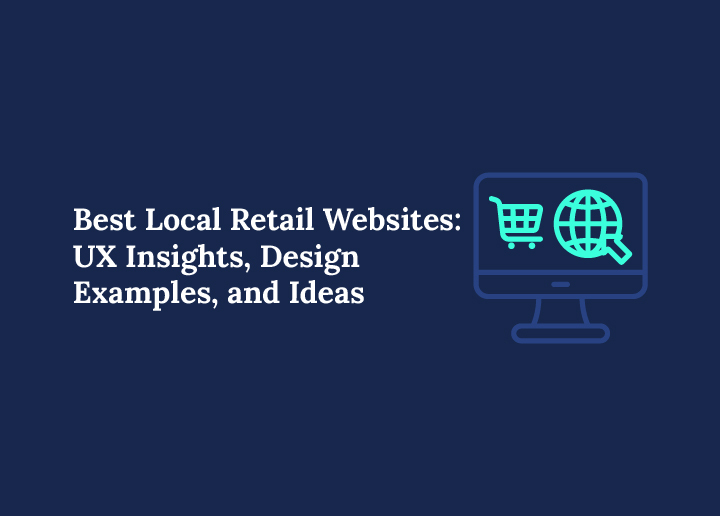Competing with retail giants requires a strong online presence for local businesses. A well-designed regional retail website can transform a simple digital storefront into a successful e-commerce platform, fostering community, increasing sales, and enhancing brand loyalty. This guide highlights the key elements of effective local retail websites.
We will explore the critical UX features, showcase inspiring real-world design examples, and provide a clear, actionable roadmap for building or optimizing your website.
We’ll also touch on why incorporating SEO and AI optimization is no longer optional but necessary to stand out in today’s crowded digital landscape. The goal is to show how a well-crafted online presence can transform a local small business into a brand that resonates far beyond its physical location.
Why Local Retail Websites Need Outstanding User Experience?
Your retail website serves as the primary digital storefront for your business. It’s often the first point of contact for potential customers, and its quality directly impacts your credibility and brand image.
In a world where consumers have endless choices, a clunky, slow, or difficult-to-navigate site will quickly lose visitors to competitors, including major online platforms and other ecommerce sites.
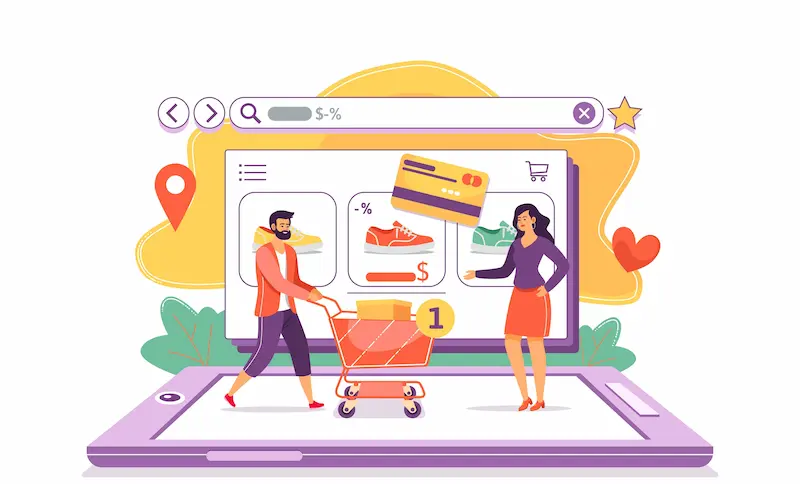
An excellent user experience builds trust and relevance. It shows that you value your customers’ time and are committed to providing a seamless shopping experience.
For a local small business, this is a powerful way to compete. A clean, fast, and easy-to-use site demonstrates professionalism and reliability.
It encourages repeat visits and positive word-of-mouth. Crucially, in modern life, where shoppers are constantly on the go, a good retail website must be perfectly optimized for mobile devices.
Mobile-first design is non-negotiable, ensuring fast load speeds and responsive layouts for most shoppers who use their smartphones.
Beyond aesthetics, a great UX integrates trust-building elements. This includes transparent policies, clear contact information, and visible security cues. These features reassure potential customers and make them feel safe when purchasing.
Ultimately, a website with superb UX is not just a sales channel; it’s a vital tool for building a credible, competitive, and successful online business.
Build a High-Performing Retail Website Today
Transform your local retail store into a seamless online store that drives sales, engages customers, and grows your business.
Essential UX Features of Top Local Retail Websites
The best local retail websites are meticulously designed with the user in mind. Here are the core features that define a great ecommerce website design.
Intuitive Navigation and Search Experience
A visitor’s first frustration often comes from being unable to find what they’re looking for. Top ecommerce sites prevent this with intuitive navigation.
A prominent search bar with autocomplete functionality is a must. It helps users quickly find products without needing to know the exact spelling. Advanced search capabilities, like voice and image search, are becoming more common and add significant value.
Clear, logical categories and menus are also vital. The structure should be easy to understand, whether it’s a simple drop-down menu or a detailed mega-menu.
Consistent navigation across all pages and devices ensures a smooth user experience. This prevents users from feeling lost and guides them efficiently through your online shop.
High-Quality Product Presentation
In online retail, your products are your stars. How you present them makes all the difference. Using high-quality images is non-negotiable.
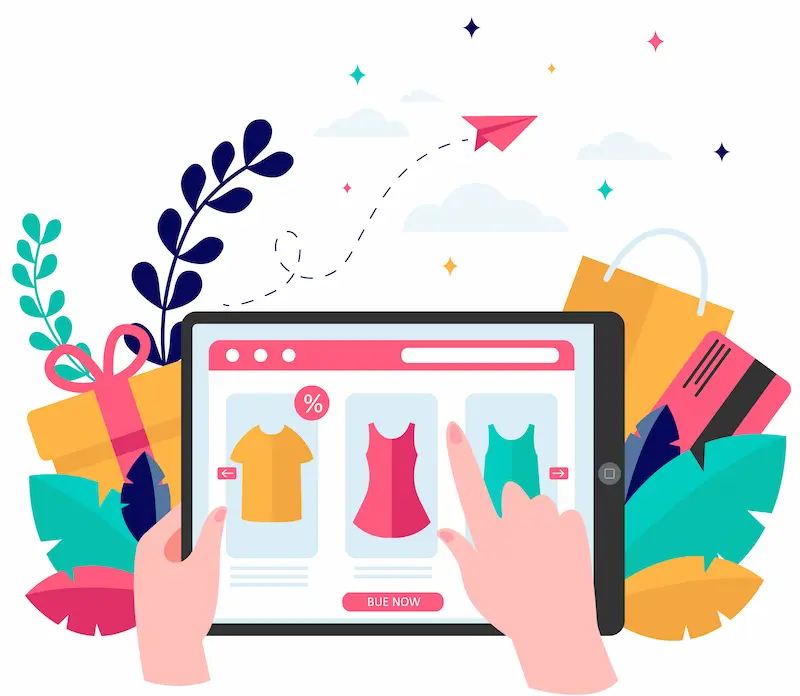
High-resolution photos from multiple angles, zoom functionality, and lifestyle shots that show the product in use are essential. Videos and 3D models can further enhance the experience, giving customers a comprehensive view of the item.
Alongside stunning visuals, you need clear and compelling product descriptions. A product page should have detailed descriptions, including specifications, dimensions, and materials.
This information helps potential customers make informed decisions and reduces the likelihood of returns. By providing comprehensive details, you build confidence and trust.
Streamlined Checkout with Trust Signals
The checkout process is the final hurdle. A complex or lengthy checkout flow is a leading cause of abandoned carts. A simplified, multi-step process with clear progress indicators, or a single-page checkout, can dramatically improve conversion rates. Offering a guest checkout option is also crucial, as many users prefer not to create an account for a one-time purchase.
To build trust, your checkout page must be visually secure. Displaying SSL certificates, secure payment badges, and logos of accepted multiple payment methods (like Visa, Mastercard, and Apple Pay) reassures customers that their financial information is safe. This “social proof” and security information make a real difference in completing the purchase.
Mobile Optimization and Performance
With most internet traffic from mobile devices, your retail website design must be mobile-first. A responsive design is the baseline, ensuring your site adapts seamlessly to different screen sizes.
However, proper mobile optimization goes further. Large touch targets, clear buttons, and simplified menus prevent misclicks and make navigation easy on small screens.
Progressive Web Apps (PWAs) are also gaining traction. They provide a native app-like experience within a browser, with features like offline access and push notifications.
This approach offers a modern, high-performance solution that can significantly improve your website’s mobile performance.
Personalization and AI-Powered Recommendations
For a local business, connecting with customers personally is key. Your website can replicate this with personalization. AI-driven product suggestions based on a user’s browsing history and purchase behavior can make them feel understood.
You can take this a step further by using contextual information, like weather or upcoming local events, to recommend relevant products. This personalized online experience enhances customer satisfaction and increases average order value.
Omnichannel Integration for Local Retail
An actual local retail website bridges the gap between the digital and physical worlds. Features like “Buy Online, Pick Up In Store” (BOPIS) and in-store returns create a seamless omnichannel experience. Synchronized inventory management across your ecommerce store and physical store is also vital.
This ensures customers see the stock levels online before heading to your location. Platforms like Square are great examples of integrated systems that help small businesses manage their in-store and online operations from a single dashboard.
Enhancing Trust with Reviews, Support, and Transparency
Trust is the foundation of any successful online business. Displaying customer testimonials, ratings, and online reviews is a form of social proof that builds confidence.
A comprehensive FAQ section and clear return policies also demonstrate transparency and professionalism.
Offering options like live chat and AI chatbots for customer support provides instant assistance, addressing questions and concerns in real time. This level of support can be a key differentiator for a local business.
Inspiring Design Examples of Local Retail Websites
Looking at the best local retail websites provides invaluable inspiration. These website examples demonstrate how a great user experience and visual design can tell a compelling story and drive business growth.
Jones Bar-B-Q (Kansas City, USA)
Jones Bar-B-Q is a family-run restaurant that has masterfully transformed its local brand into an ecommerce business. Its website uses strong storytelling and bold imagery to connect its local roots with its online retail success.
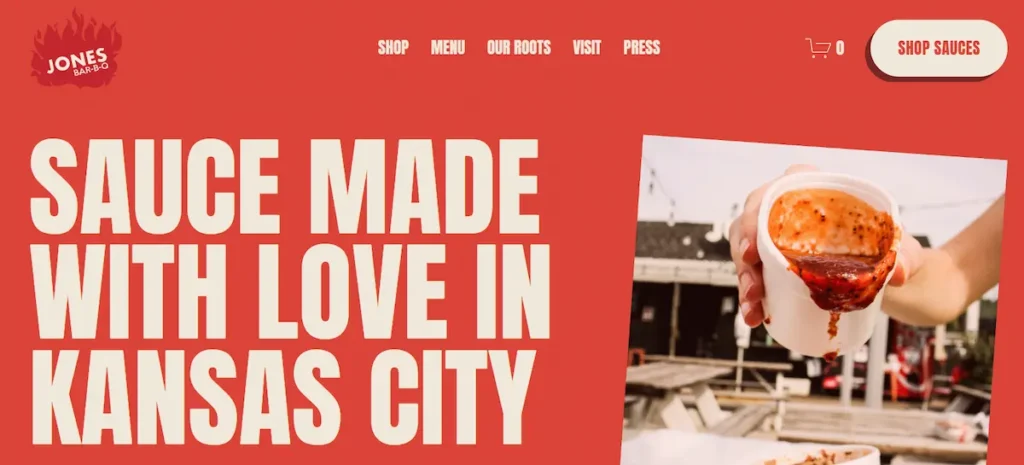
The visually appealing site captures the authentic, down-to-earth feel of their brick-and-mortar location, making customers feel a personal connection to the brand.
Oishii (New York, USA)
Oishii, a premium berry farming brand, is strongly tied to local agriculture. Their ecommerce website uses immersive video and a clean, minimalistic design.
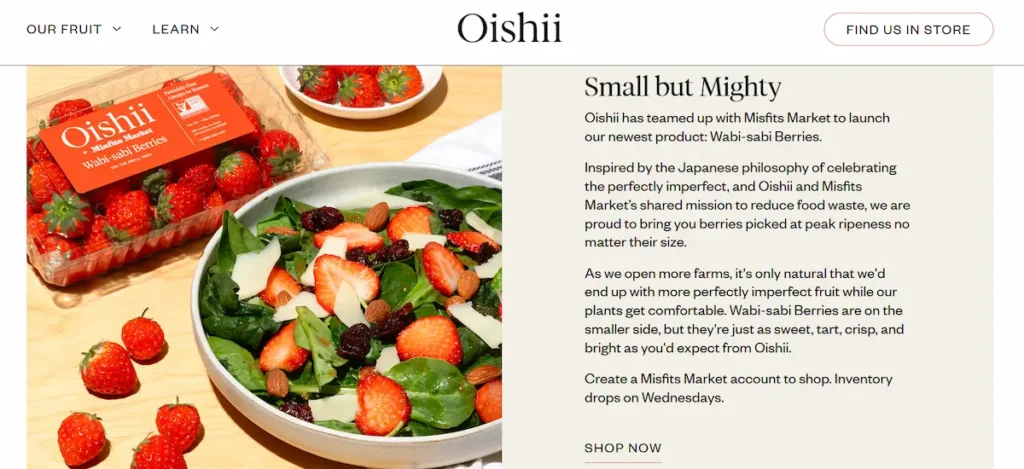
The powerful hero image and video content instantly convey the freshness and quality of their products. This great ecommerce site connects emotionally with consumers by highlighting its local origins and quality.
Grind Coffee (London, UK)
Starting as a café and roastery, Grind Coffee has become a successful subscription-based business. Their website has a clean, modern design and an excellent subscription flow replicating the in-store experience digitally.
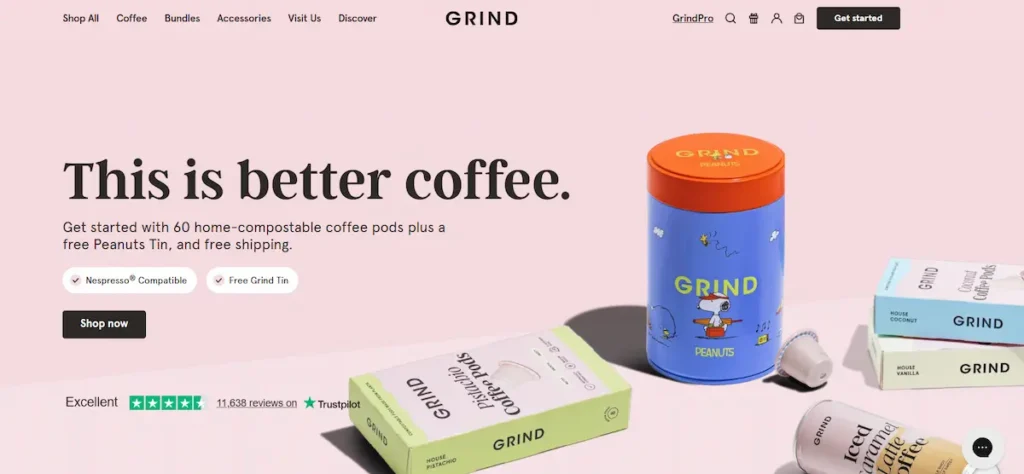
The simple, user-friendly interface makes it easy for customers to sign up and manage their subscriptions, which is a superb job of turning a physical business model into a digital one.
Maple Street Biscuits (Southern USA)
Maple Street Biscuits is a local comfort food chain whose website perfectly matches its brand. It uses bright colors, warm imagery, and simple navigation to create a homely, welcoming feel.
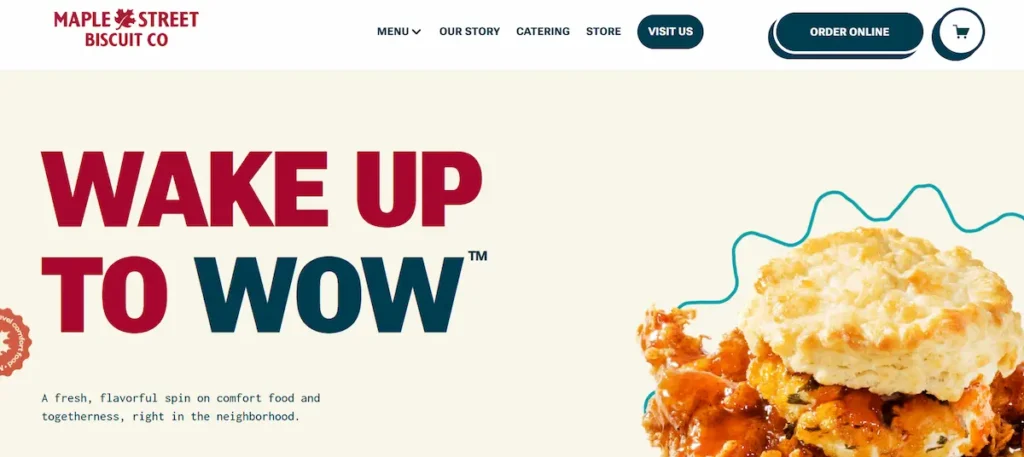
The design reflects the brand’s clear value proposition and community-focused ethos, showing that a great website design can capture the essence of a brand’s physical location.
Soilboy (Singapore)
Soilboy, a boutique plant shop, has a minimalist ecommerce website design. The uncluttered layout uses plenty of white space to highlight its beautiful plant products.
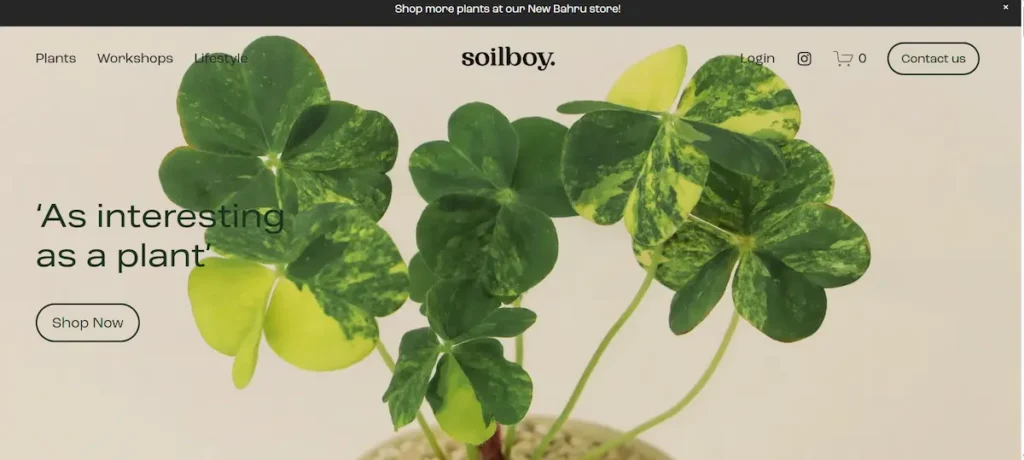
The site also includes valuable plant-care content, positioning the brand as an expert and building a community space around its offerings. This is an excellent example of a business that educates while it sells.
Black Star Pastry (Sydney, Australia)
Famous for its watermelon cake, Black Star Pastry is an iconic local bakery. Its website features quirky branding and visual storytelling that mirrors the unique atmosphere of its cafés.
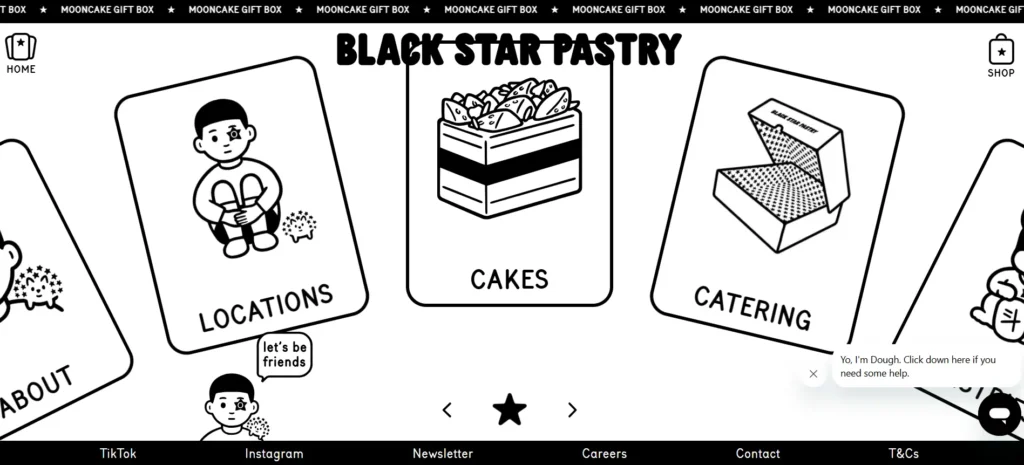
The visually appealing design and excellent online experience translate the brand’s unique identity into a digital format.
Prevail Boxing (Los Angeles, USA)
Prevail Boxing is a community boxing studio that combines booking, retail, and community storytelling on its own website.
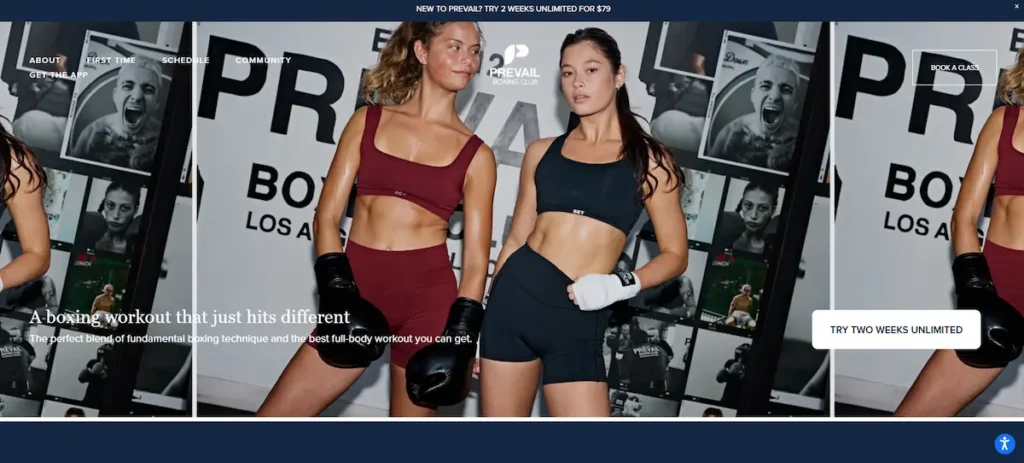
The site is a fantastic example of a business website that seamlessly integrates multiple revenue streams. Customers can book classes, buy retail gear, and read about the community, all in one place.
Kings Comedy Club (UK)
Kings Comedy Club is an excellent example of a local entertainment venue selling tickets and merchandise online.
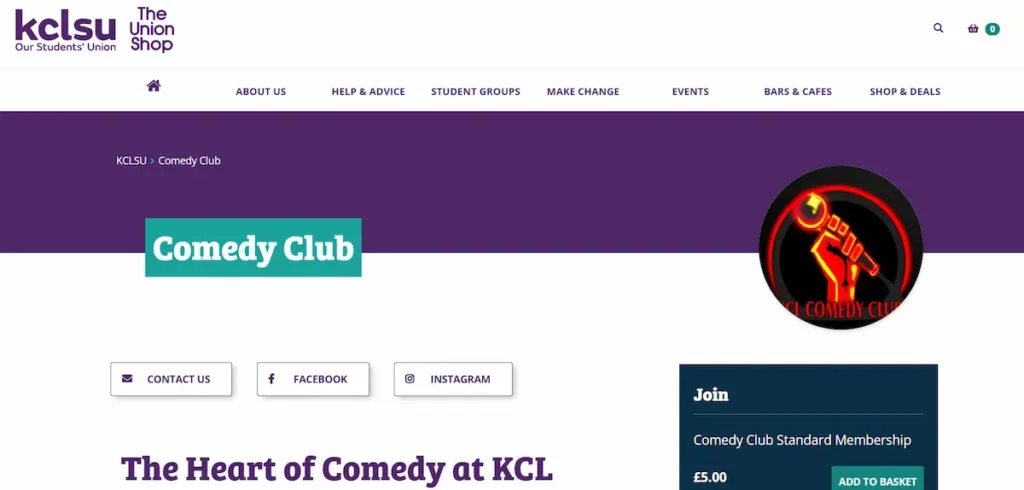
Its clean, functional website is easy to navigate and clearly focuses on upcoming events and product listings. This is an excellent case study of an events-based ecommerce business for a local small business.
Notebook Therapy (Japan-inspired, global niche)
Notebook Therapy is a niche stationery brand started small and grew through a website design that uses lifestyle imagery and community-driven design.
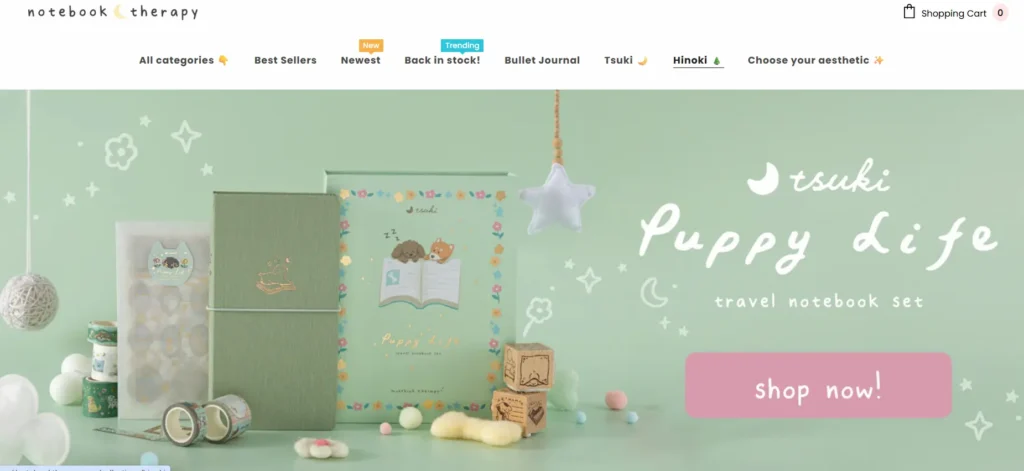
The brand’s homepage and product pages tell a story that supports an emotional connection with the target audience. This shows how a specific niche can build a global business with the correct branding and website.
West Bourne (California, USA)
West Bourne is a local, sustainability-focused food brand with fast-moving visuals and eco-conscious branding.
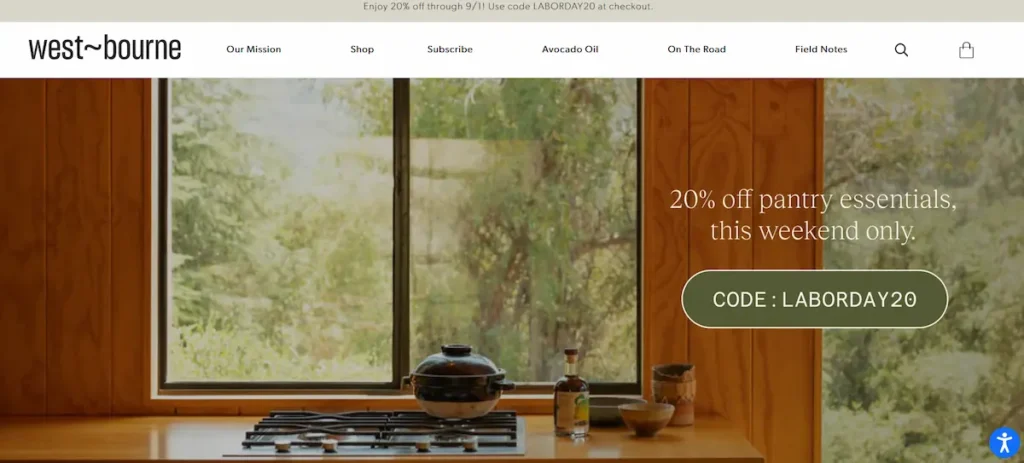
Their ecommerce website appeals to modern consumers by highlighting their commitment to sustainability. The design is modern and clean, and effectively communicates their clear value proposition.
How to Build or Optimize Your Own Local Retail Website
Building a successful online store for your local retail business doesn’t have to be complicated. By focusing on user experience, local SEO, and innovative design, you can create a website that attracts potential clients and stands out among online marketplaces. Here’s a practical checklist to guide you.
Choose the Right Platform
The first critical step is selecting the right website builder. Look for a solution that balances ease of use, cost, and the ability to integrate with your physical retail stores for inventory management.
For a local business, you need a platform that supports local SEO, social media links, and the display of high-quality photos. Consider whether you need tools to highlight cruelty-free products or other unique offerings. If your business relies on in-store sales and online orders, ensure your platform syncs inventory and payment systems seamlessly.
UX-First Design Principles
Prioritize web design that emphasizes clarity and usability. Use mobile design best practices to ensure shoppers on smartphones or tablets can easily navigate your online store.
- Incorporate plenty of whitespace to make content easy to read.
- Use clear Calls-to-Action (CTAs) to guide visitors to shop, book, or contact you.
- Interactive elements like hover effects or sliders can engage users without overwhelming them.
A visually appealing design, including high-quality photos and multiple elements that showcase products or services, can make your portfolio website feel professional and trustworthy.
Content and SEO Strategy
Your own business website must be discoverable in search engine results pages. Implement search engine optimization strategies such as:
- Keyword-rich product descriptions and meta titles.
- Optimized alt tags for images to enhance visibility.
- Fast loading speeds and clean code to please search engines.
Focus on local SEO by including your business address, phone number, and links to social media posts that engage your community. Highlight how your retail stores differ from many competitors regarding products, service, or sustainability.
Trust and Accessibility
Building credibility is essential for local retail websites. Clearly display contact information, shipping and return policies, and secure payment options.
Ensure your site is accessible to all users, including those with disabilities, to improve customer satisfaction and search rankings. Accessibility compliance also signals professionalism to potential clients browsing your online store, show, or portfolio.
Ongoing Optimization
A website’s performance should be continuously monitored and improved. Tools like Google Analytics can track user behavior and identify areas for enhancement.
- Heatmaps reveal which elements capture attention and which are ignored.
- A/B testing of layouts, CTAs, or imagery can boost engagement and conversions.
- Gathering customer feedback ensures your online store stays relevant, intuitive, and optimized for repeat business.
Continuous iteration ensures your local retail website remains competitive, strengthens your brand presence, and supports long-term growth in online marketplaces and your physical locations, whether the Canal Street Market or your neighborhood hub inspires you.
Conclusion
Creating one of the best local retail websites is an investment that pays dividends. It’s about designing a digital storefront that reflects the quality and personality of your brand while making it incredibly easy for customers to shop.
Focusing on a user-centric design, incorporating features like intuitive navigation, and providing high-quality product presentations can turn your website into a robust sales and branding tool.
The examples we’ve showcased prove that a small, local business can have an incredible online presence that rivals larger brands. Remember to approach your website not as a one-time project, but as a vital, living online shop that you continuously optimize based on user behavior and feedback.
By embracing a user-centric, conversion-optimized, and SEO-driven mindset, you can build an ecommerce store that looks great, delivers a smooth user experience, and truly grows your business.
FAQs About Local Retail Websites
What makes a great ecommerce website for local retail businesses?
A great ecommerce website balances design, usability, and functionality. Features like intuitive navigation, high-quality photos, clear Calls-to-Action (CTAs), and mobile-friendly layouts improve the shopping experience. Integrating local SEO ensures your site reaches potential customers in your area. Many successful Shopify stores use storytelling and community-driven content to connect with buyers.
How can I design a good retail website for my small business?
A good retail website focuses on the user. Prioritize ecommerce website design principles such as simple layouts, readable fonts, fast loading speeds, and engaging visuals. Highlight products, services, or cruelty-free products, and provide clear information about returns, shipping, and store locations. Web designers can help translate your physical store’s personality into a compelling online presence.
What features should an ecommerce store include to compete with online marketplaces?
Your ecommerce store should feature personalized recommendations, easy checkout, and social media links to stand out from online marketplaces. Content like customer reviews, blog posts, or local stories (for example, inspired by Canal Street Market) can make your site memorable and trustworthy.
How do ecommerce sites drive more sales for local retail stores?
Ecommerce sites allow small retailers to reach customers beyond their physical location. You can increase conversions by combining straightforward navigation, mobile design, optimized product pages, and fast checkout. Highlighting your unique offerings ensures shoppers see why your store stands out where few competitors exist.
Can small businesses succeed with ecommerce website design on platforms like Shopify?
Absolutely. Many Shopify stores succeed by focusing on design, UX, and storytelling. With the right business website strategy, including SEO and marketing, small local retailers can create a great ecommerce experience that rivals larger competitors and drives repeat customers.
